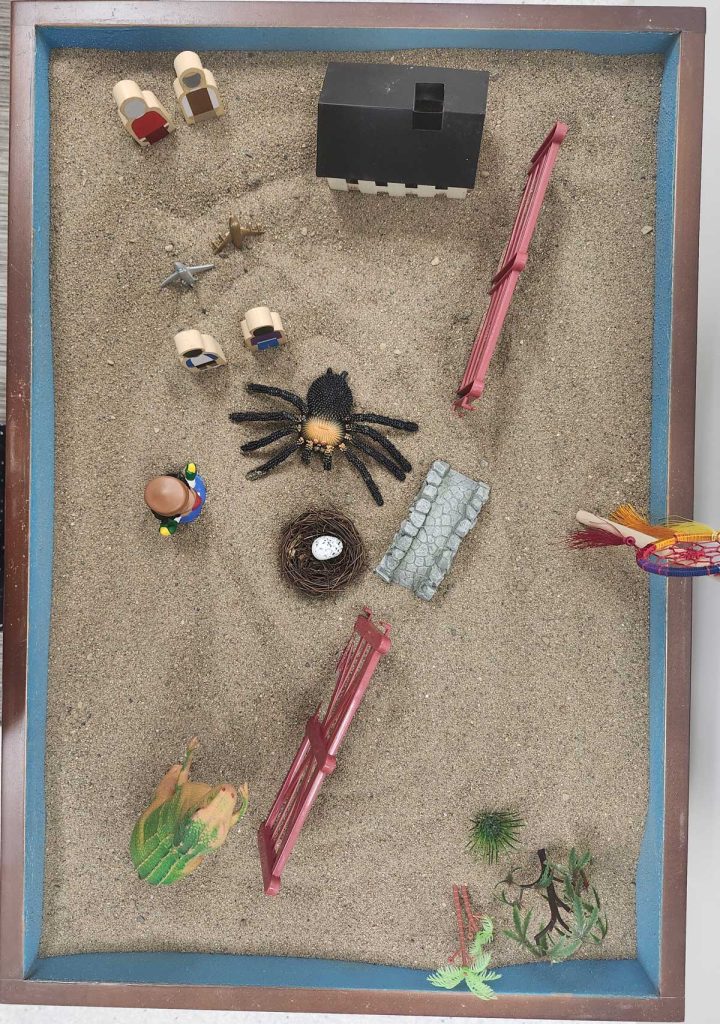Submission 2024
| Submitted by: | Mary Etem Mbiatem |
| Department: | Education |
| Faculty: | Education |
The Third Space theory first coined by Homi Bhabha describes an “in-between space” where “cultural boundaries meet and blur”, allowing for the synthesis and creation of new identities and meanings. The Third Space as depicted in the sand tray captures a fluid space loaded with ambiguity, and in which there is constant negotiation and reappropriation of meaning. The Third Space has particular relevance in cross-cultural parenting when working with ethnocultural families who have come in contact with Child Intervention Services (CI). The often chaotic and high conflict dynamics between CI and ethnocultural families, largely resulting from cultural and linguistic differences, require careful navigation by experienced Cultural Brokers who are familiar with cultural ways of parenting and, understand the challenges of parenting in a bi-cultural post settlement context. Holding the Third Space requires the capacity and openness to be able to sit with discomfort in order to allow for the creation of new possibilities, and ultimately, mediate the relationship between CI and the families to avoid unnecessary child apprehension.
Was your image created using Generative AI?
No.
How was your image created?
The creation of the Third Space as depicted in the sand tray involved a spiritual component, reflexivity on my experiences being a witness to the Third Space as a psychologist having worked alongside Cultural Brokers supporting ethnocultural families, and reflecting on my positionality and shared identity as an immigrant parent. Through my witnessing of the Third Space, I depict the stories and experiences of the Cultural Brokers (and the families) which I have carried with me over the years. The sand tray is a tool often used to tap into implicit (unconscious) meanings to make them explicit. The spiritual component of this creation involved connecting with the sand- with eyes closed and exploring the sand with my hands, allowed for an embodied experience of the stories I witnessed. I then proceeded to a shelf containing miniatures objects, making contact with the objects and adding them to the sand tray as they ‘spoke to me’. Throughout this process I engaged in ongoing reflection as I explored the relationship between different elements in the scene and the relational dynamics unfolding within this Third space.

